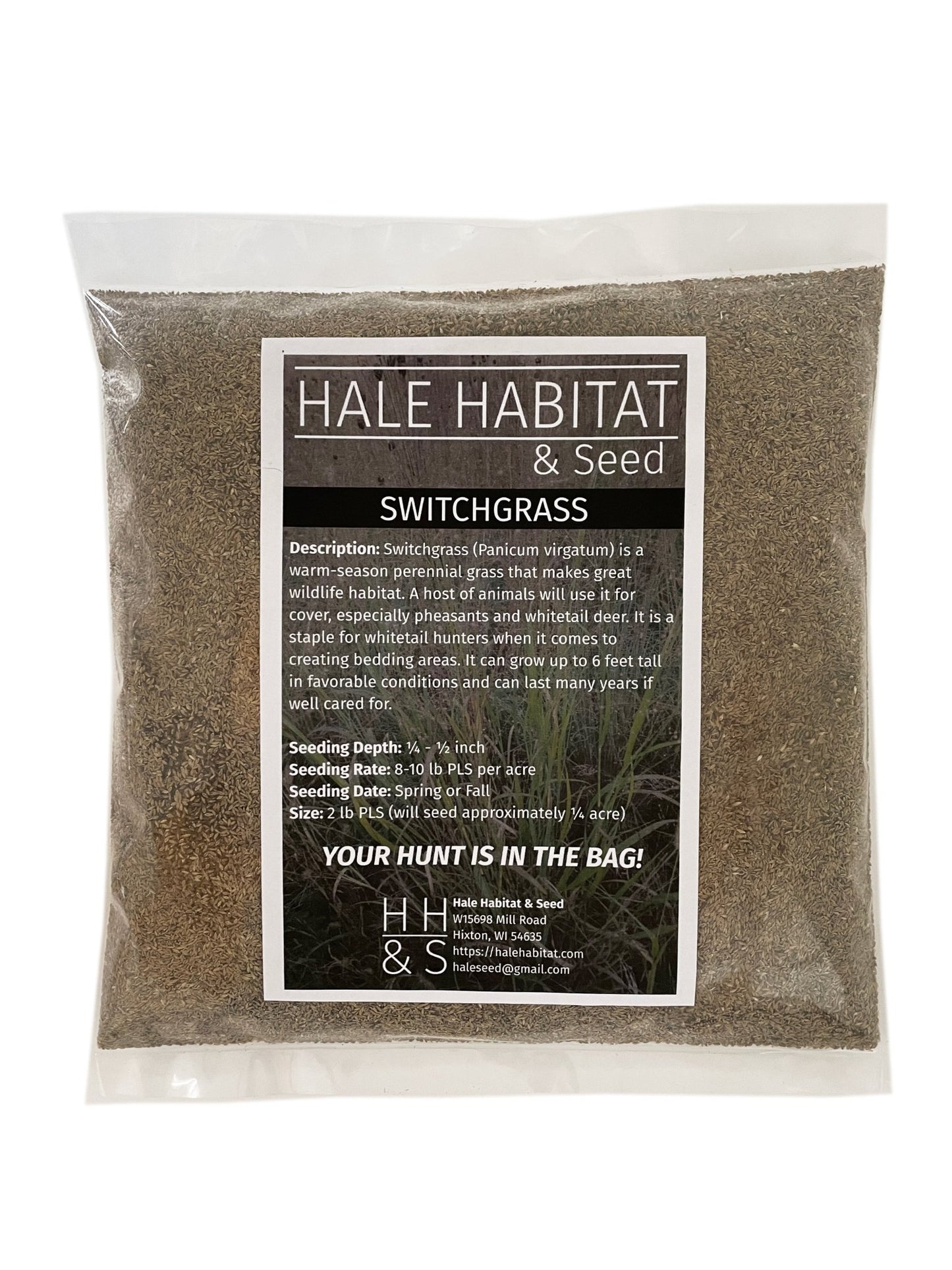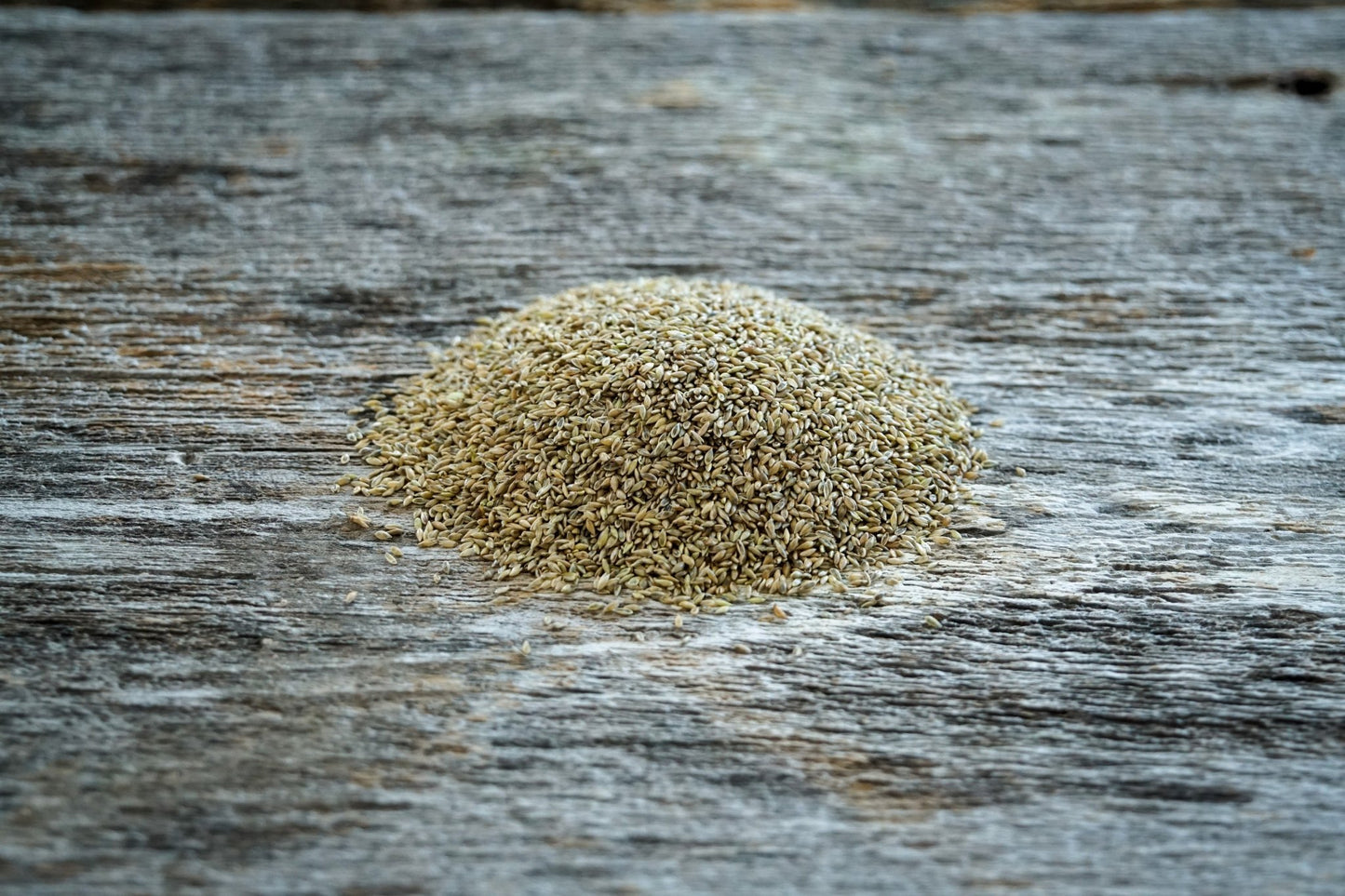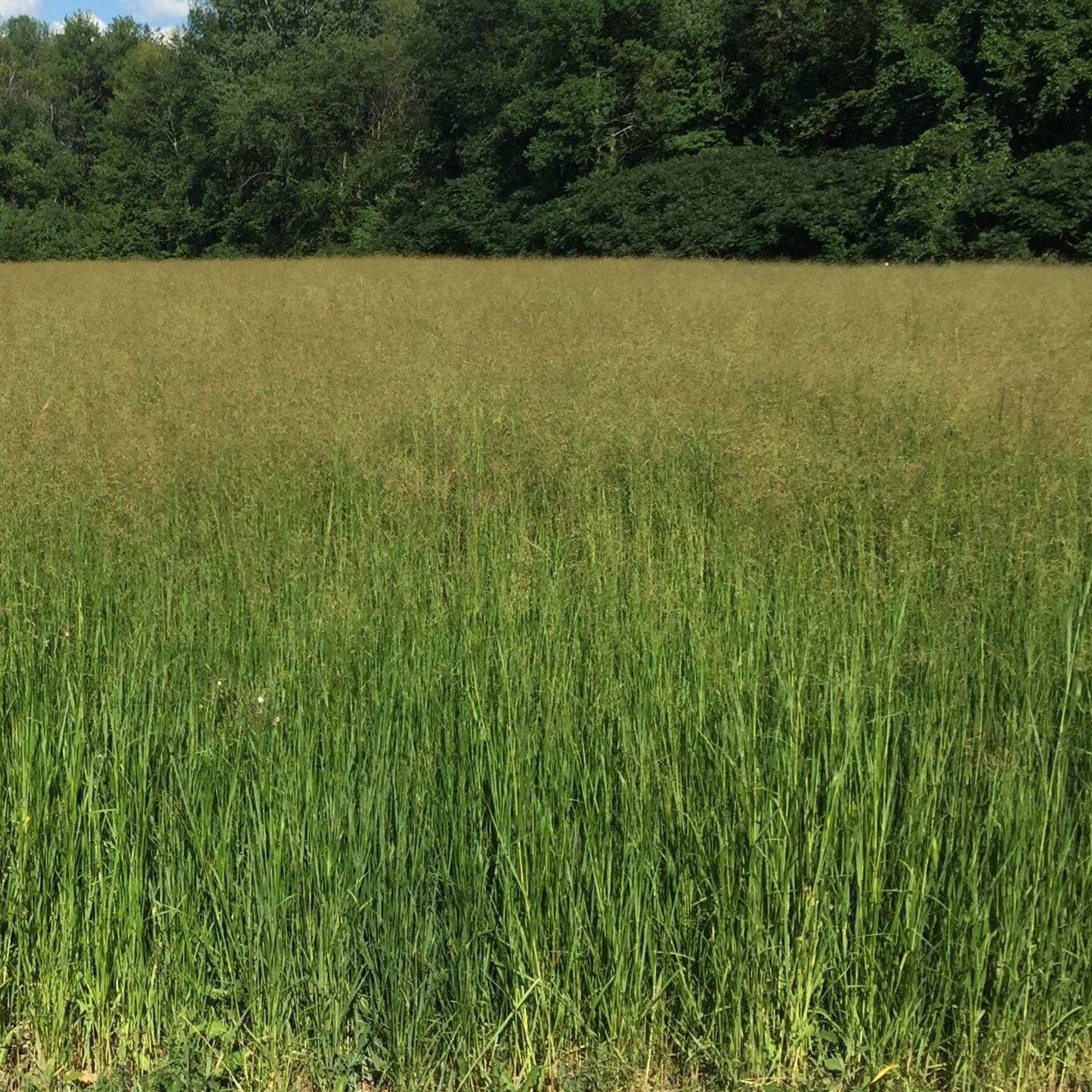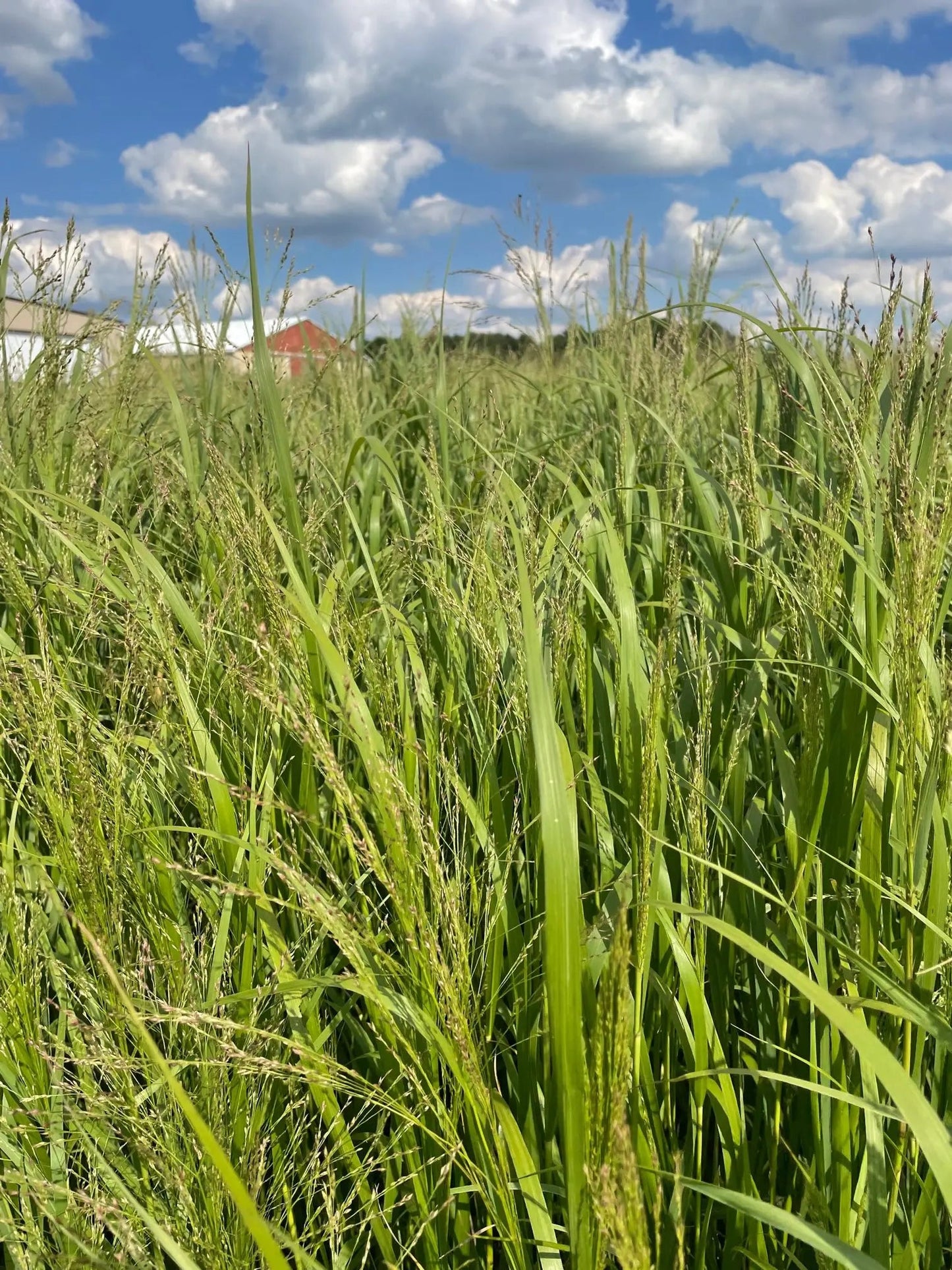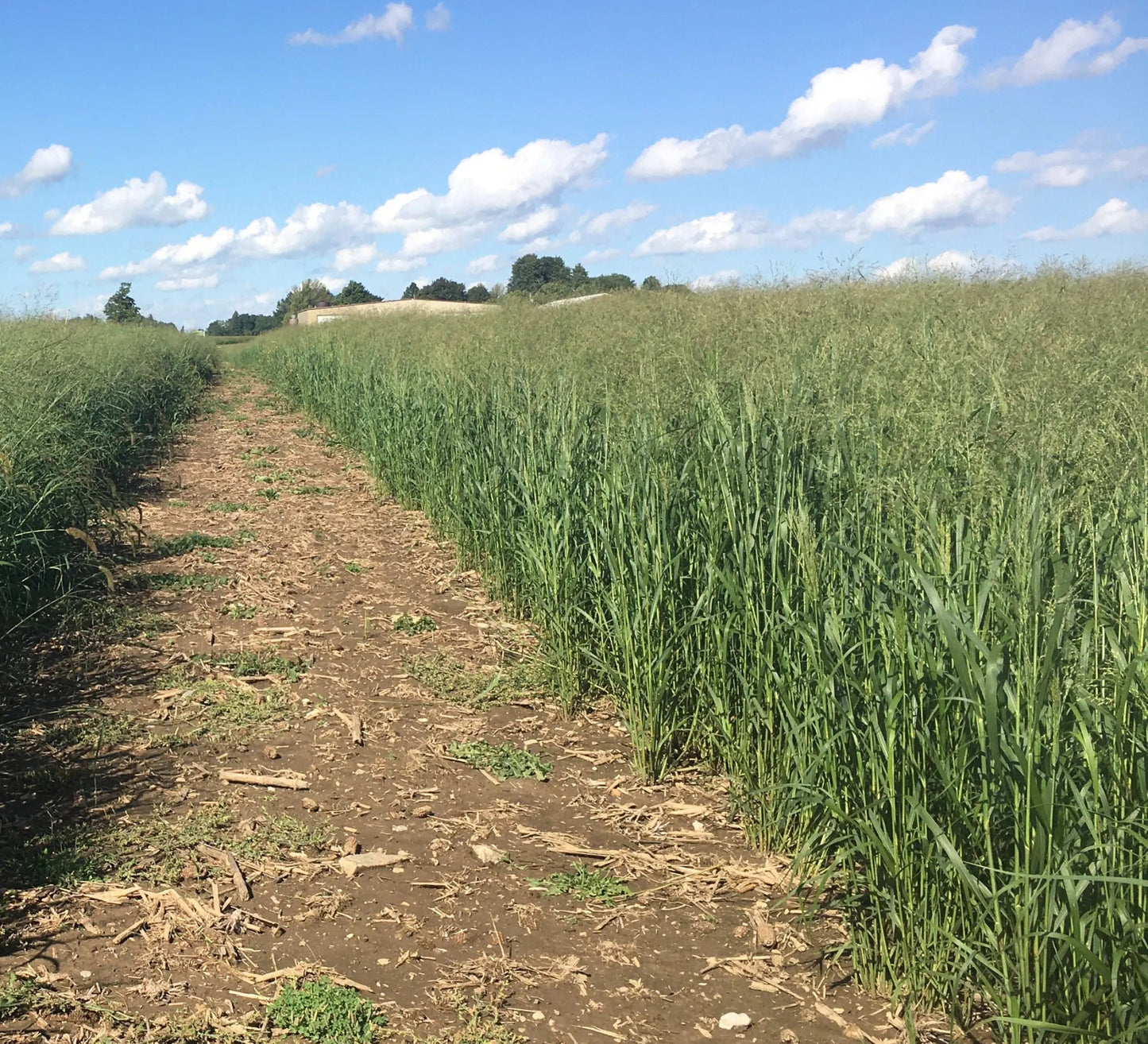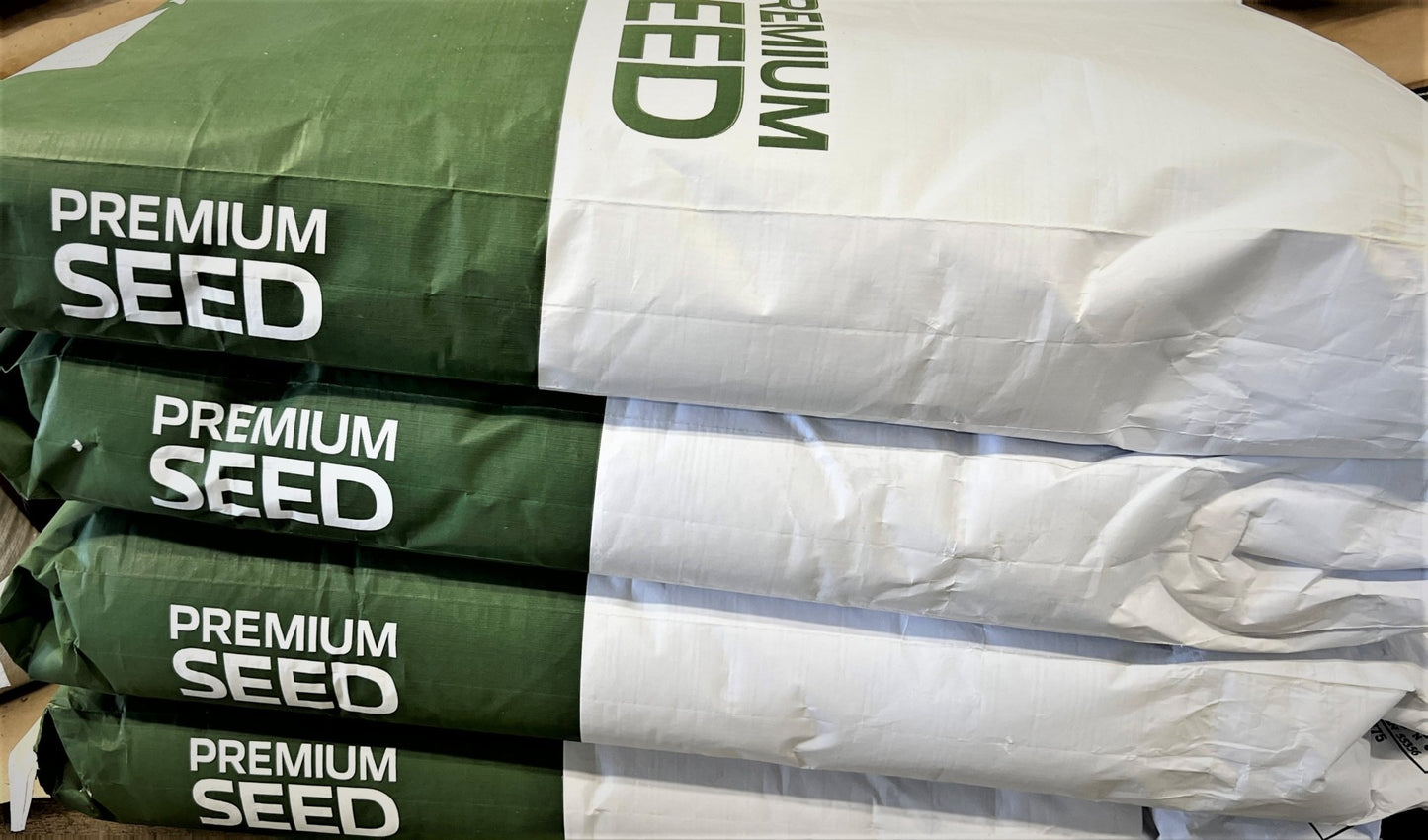Hale Habitat & Seed
Switchgrass (RC Tecumseh)
Switchgrass (RC Tecumseh)
FREE SHIPPING!
Couldn't load pickup availability
RC Tecumseh Switchgrass Native Grass Seed - 2 lbs pure live seed. New Release - Good Drought Tolerance Upper Midwest! First new upland switchgrass release since 1989 for the Great Plains. Tall height and excellent yield potential – can reach 6-7′ tall in MN. It is the tallest upland switchgrass for the Northern Great Plains. A new early season variety of upland switchgrass developed from Summer switchgrass (originating in Eastern Nebraska). It is both heat and drought tolerant (better drought tolerance than Cave-in-Rock). Genetically improved for ease of establishment, upright growth habit and increased height, making it an ideal choice for high quality habitat for deer. Provides a good wintering habitat for pheasants as it is better standing than existing commercial upland varieties of switchgrass for the Northern Great Plains.
Small seeded variety that works very well for frost seeding. Selected for reduced seed dormancy and increased seedling vigor. Very good winter hardiness and persistence, tested to be winter hardy to zone 3B. Grows well on diverse soil types throughout the Great Plains. It is very well suited to low fertility sandy soils in the Upper Midwest. In the Midwest it can be used in a mixture with RC Big Rock. In southern zones can be mixed with a lowland switchgrass.
Best adapted to regions that receive on average less than 30″ of average annual precipitation. For regions that receive 26-30″, consider a blend of RC Big Rock and RC Tecumseh switchgrass. For regions that receive more than 30″ use RC Big Rock. For regions that receive less than 26″, use RC Tecumseh switchgrass.
Summary of Wildlife Benefits
-
Provides dense cover for nesting birds, small mammals, and fawns.
-
Seeds are a food source for birds like quail, pheasants, and sparrows.
-
Improves soil health and reduces erosion, benefiting overall ecosystem stability.
RC Tecumseh Switchgrass is a hardy, low-maintenance native grass that enhances wildlife habitat, supports conservation efforts, and is ideal for medium to tall cover and screening.
Key Characteristics of RC Tecumseh Switchgrass
-
Planting Time:
-
Late spring to early summer (May to June) when soil temperatures reach 60°F or higher.
-
-
Planting Depth:
-
¼ to ½ inch for optimal germination and establishment.
-
-
Planting Rates:
-
Broadcast: 8-10 lbs of pure live seed (PLS) per acre.
-
Drilling: 5-7 lbs of PLS per acre.
-
-
Days to Maturity:
-
Establishes in 1-2 years, reaching full maturity by the third growing season.
-
-
Height at Maturity:
-
4-6 feet tall, making it ideal for medium to tall cover and screening.
-
-
Drought Tolerance:
-
High; deep root system allows it to thrive in dry conditions.
-
-
Saturated Soil Tolerance:
-
Moderate; can tolerate occasional flooding but not prolonged waterlogged conditions.
-
-
Shade Tolerance:
-
Low; prefers full sun for optimal growth.
-
Fertilization Guidelines
-
Nitrogen (N):
-
Apply 50-70 lbs per acre at planting, with additional applications of 30-50 lbs per acre in subsequent years if needed for biomass production.
-
-
Phosphorus (P) and Potassium (K):
-
Apply based on soil test recommendations. Typical rates range from 20-40 lbs per acre for P and K.
-
-
pH Range:
-
Prefers a soil pH of 5.5-7.5 for optimal growth.
-
Herbicide Use
-
Switchgrass is slow to establish and may require weed control during the first 1-2 years.
-
Pre-Emergent Herbicides:
-
Use atrazine or imazapic (labeled for switchgrass) to control annual grasses and broadleaf weeds during establishment.
-
-
Post-Emergent Herbicides:
-
2,4-D or glyphosate (spot treatment) can be used for broadleaf weed control. Avoid herbicide use once switchgrass is established to protect wildlife habitat.
-
-
Caution: Follow label instructions and avoid herbicides that may harm non-target species.
Share
